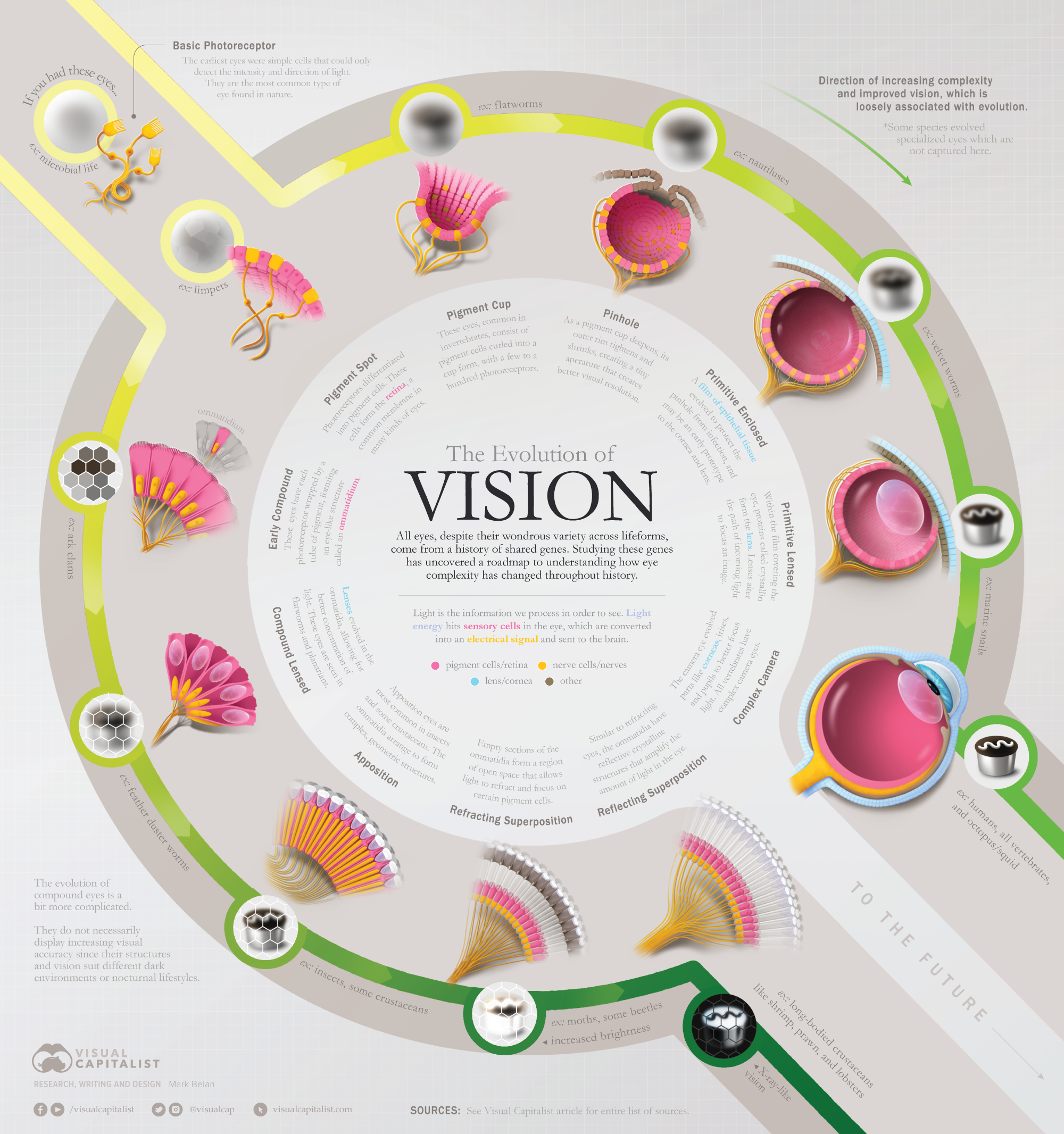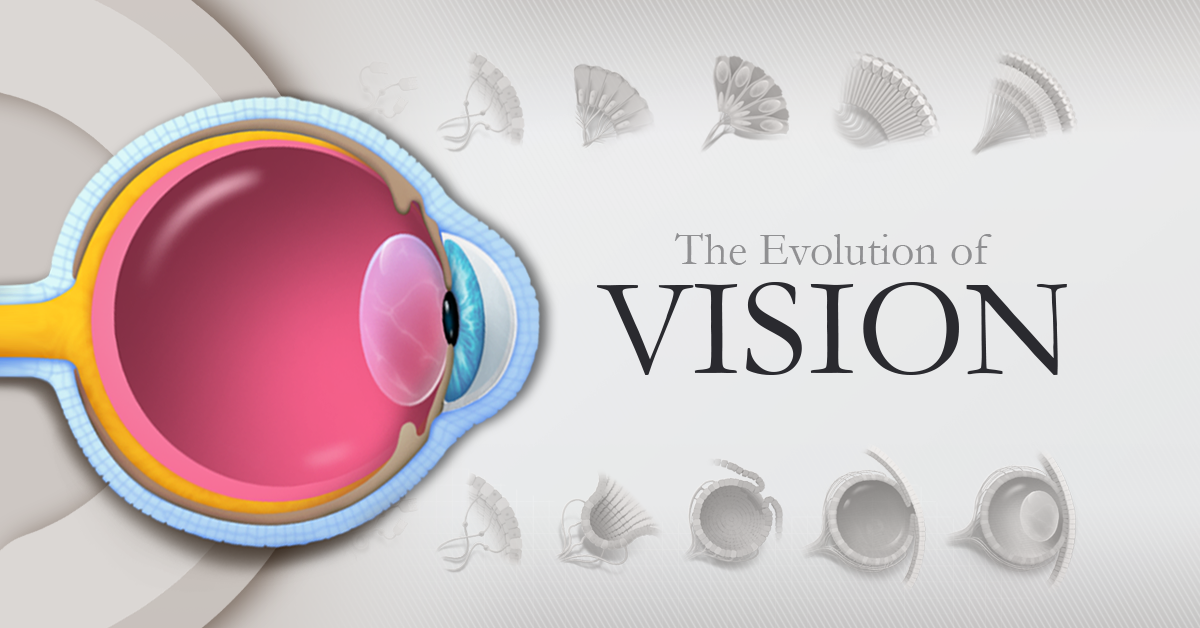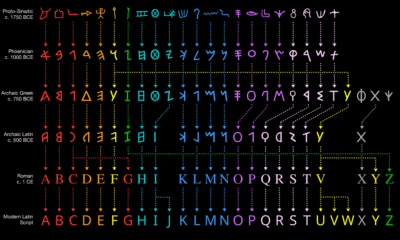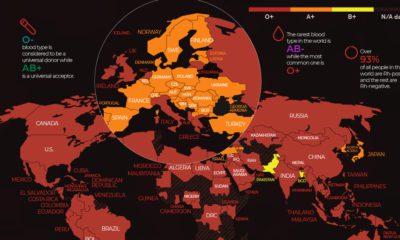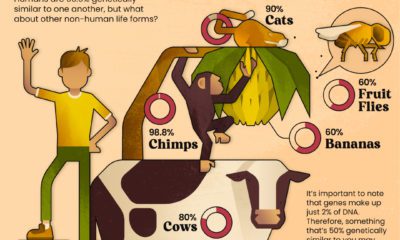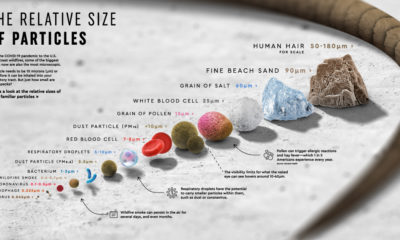Misc
Visualizing the Evolution of Vision and the Eye
View the high-resolution version of this graphic.
Roadmapping the Evolution of the Eye
Throughout history, numerous creatures have evolved increasingly complex eyes in response to different selective pressures.
Not all organisms, however, experience the same pressures. It’s why some creatures today still have eyes that are quite simple, or why some have no eyes at all. These organisms exemplify eyes that are “frozen” in time. They provide snapshots of the past, or “checkpoints” of how the eye has transformed throughout its evolutionary journey.
Scientists study the genes, anatomy, and vision of these creatures to figure out a roadmap of how the eye came to be. And so, we put together an evolutionary graphic timeline of the eye’s different stages using several candidate species.
Let’s take a look at how the eye has formed throughout time.
Where Vision Comes From
The retina is a layer of nerve tissue, often at the back of the eye, that is sensitive to light.
When light hits it, specialized cells called photoreceptors transform light energy into electrical signals and send them to the brain. Then the brain processes these electrical signals into images, creating vision.
The earliest form of vision arose in unicellular organisms. Containing simple nerve cells that can only distinguish light from dark, they are the most common eye in existence today.
The ability to detect shapes, direction, and color comes from all of the add-ons evolution introduces to these cells.
Two Major Types of Eyes
Two major eye types are dominant across species. Despite having different shapes or specialized parts, improved vision in both eye types is a product of small, gradual changes that optimize the physics of light.
Simple Eyes
Simple eyes are actually quite complex, but get their name because they consist of one individual unit.
Some mollusks and all of the higher vertebrates, like birds, reptiles, or humans, have simple eyes.
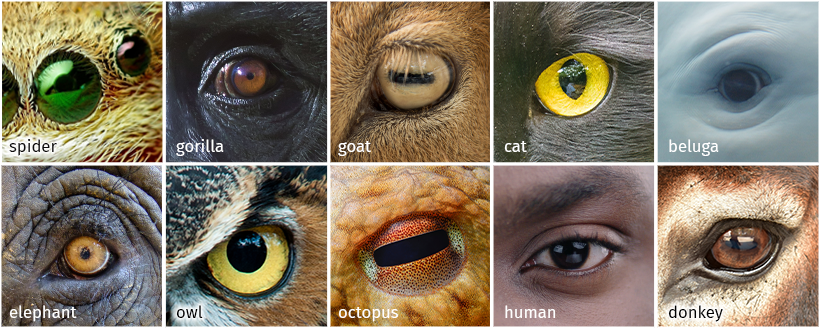
Simple eyes evolved from a pigment cup, slowly folding inwards with time into the shape we recognize today. Specialized structures like the lens, cornea, and pupil arose to help improve the focus of light on the retina. This helps create sharper, clearer images for the brain to process.

Compound Eyes
Compound eyes are formed by repeating the same basic units of photoreceptors called ommatidia. Each ommatidium is similar to a simple eye, composed of lenses and photoreceptors.
Grouped together, ommatidia form a geodesic pattern that is commonly seen in insects and crustaceans.
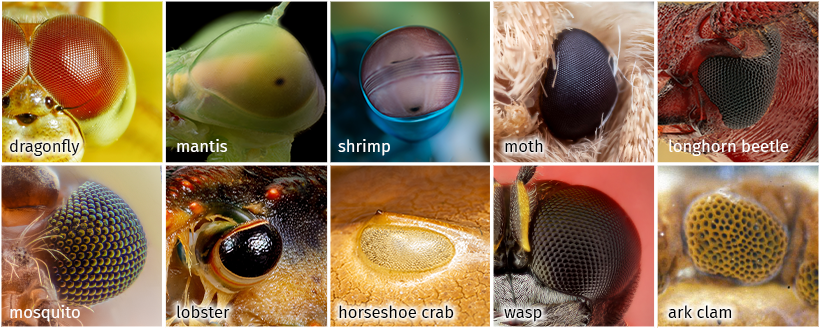
Our understanding of the evolution of the compound eye is a bit murky, but we know that rudimentary ommatidia evolved into larger, grouped structures that maximize light capture.

In environments like caves, the deep subsurface, or the ocean floor where little to no light exists, compound eyes are useful for producing vision that gives even the slightest advantage over other species.
How Will Vision Evolve?
Our increasing dependency on technology and digital devices may be ushering in the advent of a new eye shape.
The muscles around the eye stretch to shift the lens when staring at something close by. The eye’s round shape elongates in response to this muscle strain.
Screen time with cellphones, tablets, and computers has risen dramatically over the years, especially during the COVID-19 pandemic. Recent studies are already reporting rises in childhood myopia, the inability to see far away. Since the pandemic, cases have increased by 17%, affecting almost 37% of schoolchildren.
Other evolutionary opportunities for our eyes are currently less obvious. It remains to be seen whether advanced corrective therapies, like corneal transplants or visual prosthetics, will have any long-term evolutionary impact on the eye.
For now, colored contacts and wearable tech may be our peek into the future of vision.
Complete Sources
Fernald, Russell D. “Casting a Genetic Light on the Evolution of Eyes.” Science, vol. 313, no. 5795, 29 Sept. 2006, pp. 1914–1918
Gehring, W. J. “New Perspectives on Eye Development and the Evolution of Eyes and Photoreceptors.” Journal of Heredity, vol. 96, no. 3, 13 Jan. 2005, pp. 171–184. Accessed 18 Dec. 2019.
“The Evolution of Sight | PHOS.”
Land, Michael F, and Dan-Eric Nilsson. Animal Eyes. Oxford ; New York, Oxford University Press, 2002.
“The Major Topics of the Research Work of Prof. Dan-E. Nilsson: Vision-Research.eu – the Gateway to European Vision Research.” Accessed 3 Oct. 2022.
Public Opinion
How Do Chinese Citizens Feel About Other Countries?
What is the Chinese public’s view of world powers? This visual breaks down Chinese sentiment towards other countries.
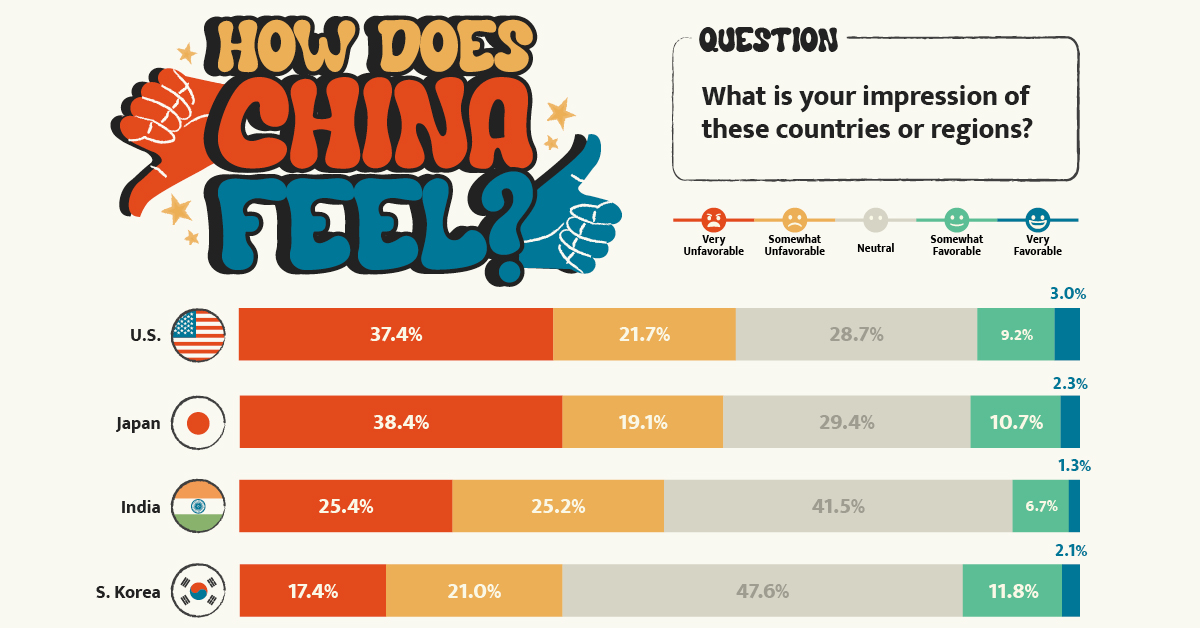
Public Opinion: How Chinese Citizens Feel About Other Countries
Tensions over Taiwan, the COVID-19 pandemic, trade, and the war in Ukraine have impacted Chinese sentiment towards other countries.
This visualization uses data from the Center for International Security and Strategy (CISS) at Tsinghua University to rank survey responses from the Chinese public on their attitudes towards countries and regions around the world.
Chinese Sentiment Towards Other Countries in 2023
In the Center’s opinion polls, which surveyed a random sample of more than 2,500 Chinese mainland adults in November 2022, Russia came out significantly ahead.
Just under 60% of respondents held Russia in a favorable view, with 19% seeing the country as “very favorable.” Contrast that to the mere 12% that viewed the U.S. in a positive light.
Here’s a closer look at the data. The percentages refer to the share of respondents that voted for said category.
| Country/Region | Very Unfavorable | Somewhat Unfavorable | Neutral | Somewhat Favorable | Very Favorable |
|---|---|---|---|---|---|
| 🇺🇸 United States | 37.4% | 21.7% | 28.7% | 9.2% | 3.0% |
| 🇯🇵 Japan | 38.4% | 19.1% | 29.4% | 10.7% | 2.3% |
| 🇮🇳 India | 25.4% | 25.2% | 41.5% | 6.7% | 1.3% |
| 🇰🇷 South Korea | 17.4% | 21.0% | 47.6% | 11.8% | 2.1% |
| 🇪🇺 European Union | 9.3% | 15.6% | 57.6% | 14.1% | 3.3% |
| Southeast Asia | 7.1% | 13.1% | 59.5% | 16.8% | 3.5% |
| 🇷🇺 Russia | 3.0% | 4.8% | 33.7% | 39.4% | 19.0% |
Japan ranked just below the U.S. in terms of overall unfavorability, though a slightly higher share of respondents saw Japan as “very unfavorable” compared to America. This is likely due to both modern tensions in the East China Sea over mutually claimed islands and historical tensions over the Sino-Japanese Wars.
Chinese sentiment towards India was also unfavorable at just over 50%, though notably the country also received the lowest favorability rating at just 8%.
Additional Survey Findings
The survey also found that 39% of Chinese people get their information on international security from Chinese state-run media (mainly through TV), with an additional 19% getting information from government websites and official social accounts. Conversely, only 1.7% get their news from foreign websites and foreign social media, partially due to the Great Firewall.
When asked about different international security issues, the biggest shares of Chinese citizens ranked the following as their top three:
- Pandemics (12.9%)
- Disputes over territory and territorial waters (12.9%)
- China-U.S. relations (12.0%)
The pandemic’s high score reflects the harsher impact COVID-19 had on China. Chinese borders were shut for years and the public faced intense measures to reduce spread.
In terms of other world events, the majority of Chinese people align with a more “Eastern” viewpoint. For example, in regards to the war in Ukraine, the report found that:
“About 80 percent of the respondents believe the U.S. and Western countries should be held most accountable [for the war], while less than ten percent of the respondents argue that Russia is mainly responsible.”– Center for International Security and Strategy, Tsinghua University
Overall, the views of the Chinese public reflect the opposite of those found in many Western countries. They provide an important insight that it is not just the Chinese government holding particular views about the world, but the Chinese public as well.
-
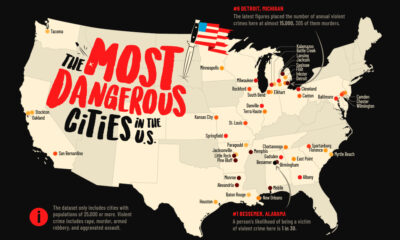
 United States1 week ago
United States1 week agoMapped: The Most Dangerous Cities in the U.S.
-
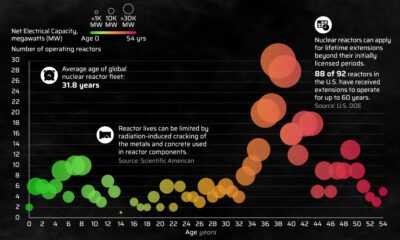
 Energy3 weeks ago
Energy3 weeks agoHow Old Are the World’s Nuclear Reactors?
-

 Countries7 days ago
Countries7 days agoMapped: World’s Top 40 Largest Military Budgets
-

 Energy3 weeks ago
Energy3 weeks agoHow Big is the Market for Crude Oil?
-

 Crime6 days ago
Crime6 days agoMapped: The Safest Cities in the U.S.
-

 Markets2 weeks ago
Markets2 weeks agoRanked: The Most Profitable U.S. Companies, by Sector
-

 Technology5 days ago
Technology5 days agoHow Long it Took for Popular Apps to Reach 100 Million Users
-

 Markets4 weeks ago
Markets4 weeks agoThe World’s Biggest Mutual Fund and ETF Providers

